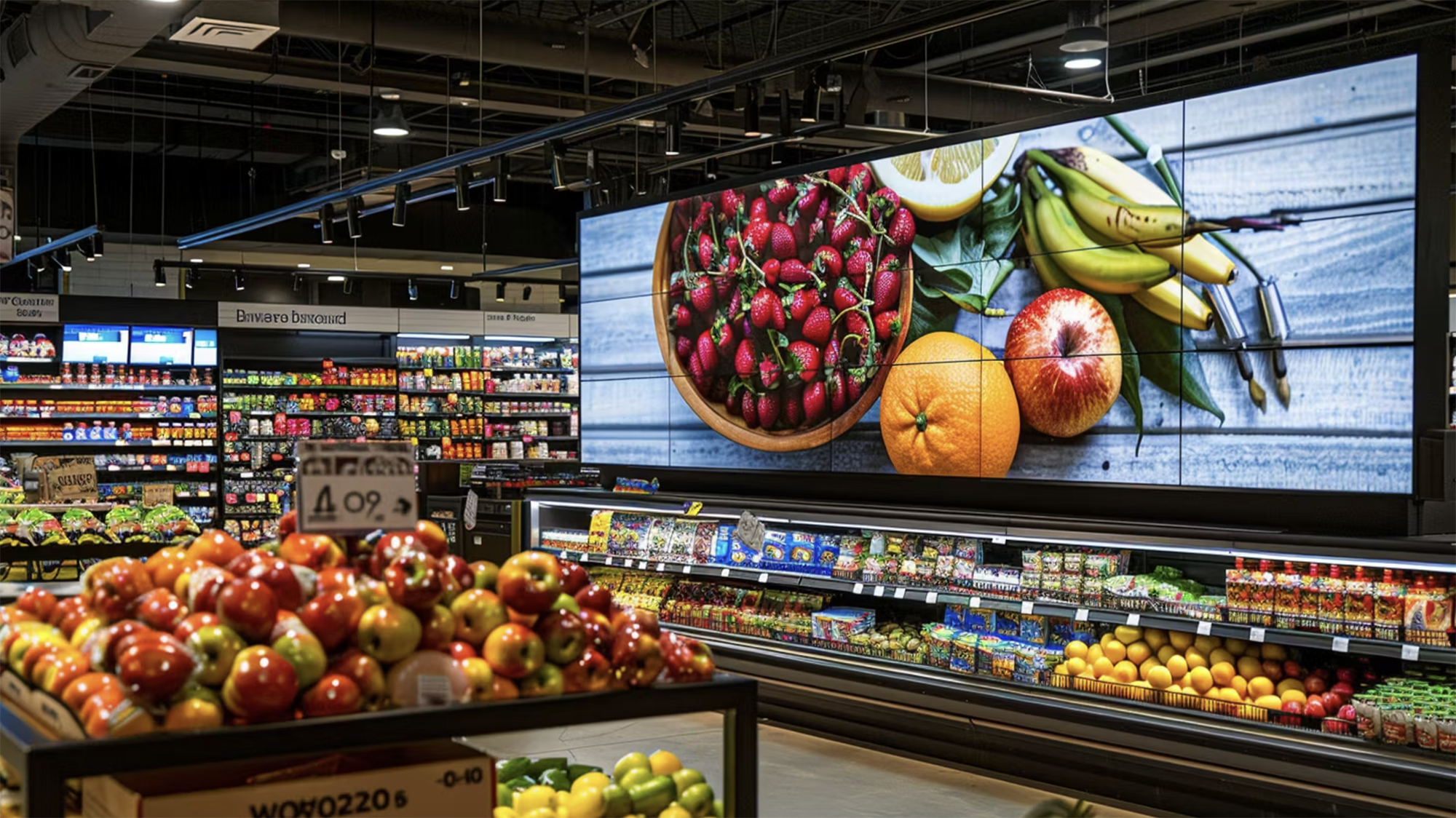Leveraging Micro-Fulfillment Centers to Empower Grocery Retailers

At A Glance
- Most grocery retailers manage to achieve only a 1-3% margin on products sold
- 86% of grocery retailers are dissatisfied with their online profitability
- A shift in business model has resulted in a boom in rapid grocery delivery
- Grocery retailers are opening up micro-fulfillment centers to manage this shift
- Micro-fulfillment centers increase profitability by bringing inventory closer to customers, reducing transportation costs, minimizing delivery times, and enhancing the shopper experience
As the world was struck by the pandemic in 2020, many customers began shopping for groceries online - resulting in an unprecedented growth of the online grocery industry. The pandemic-driven growth is still set to continue digital acceleration in grocery. While the earlier forecast predicted that digital sales will reach 14.5% by 2026, the forecast now suggests that digital sales will instead reach 20.5%.

As the percentage of customers who prefer online grocery shopping increases, the footfall at the stores might reduce. Grocers invest a substantial chunk of their money in establishing and running their stores, which includes purchasing inventory to fill the shelves. Moreover, grocery retail is a low-margin business, with an article from Forbes suggesting that retailers only manage to achieve between 1-3% margins on products sold. Moreover, according to the Incisiv-Wynshop Digital Grocery Study, 86% of grocery retailers are dissatisfied with their online profitability.
Shift in the Grocery Industry with Micro-Fulfillment Centers
There is also a shift in the way grocery retailers are operating their businesses nowadays. One of the latest trends includes rapid grocery delivery, which involves customers placing orders for a select number of products and having those products delivered within a short span of 10-15 minutes.
The grocery companies are able to achieve such rapid grocery deliveries by opening micro-fulfillment centers that are manually operated and stock a relatively lesser quantity of products. These orders are fulfilled by modes of transportation like motorized scooters or bicycles.
As per the Incisiv-Wynshop Digital Grocery Study, 55% of grocery retailers are set to test or deploy micro-fulfillment centers over the next 24 months. Moreover, grocery retailers expect 3.6% of all their online orders to be fulfilled from micro-fulfillment centers by 2025.

Most grocery retailers don’t possess the capabilities themselves to keep up with this shift in demand, hence, they look for partners which can help them facilitate this service. For instance, Instacart’s partnership with Fabric to offer micro-fulfillment solutions to the retailers. GoPuff also raked in another $1bn to bring about operational expansion, which included the opening of over 285 micro-fulfillment centers.
On the other hand, larger grocery chains like Kroger and Albertsons are investing heavily in micro-fulfillment centers. Delivery companies like Gorillas, JOKR, and Weezy, among others, are leveraging micro-fulfillment centers to facilitate their needs. While the entire grocery industry is becoming more and more interested in technology, even mega-investment firms like Softbank are showing an interest in grocery and other industries that are relying upon technology to bridge the need gap in the market.
How Micro-Fulfillment Centers Can Help Maximize the Store Value
The micro-fulfillment centers can either be a small designated area in the brick-and-mortar store itself or a mini dedicated e-commerce distribution facility. The goal is to bring inventories closer to the customers, thereby, bringing down the transportation costs as well as the delivery times. Additionally, the micro-fulfillment centers come in to replace the traditional in-store fulfillment, which often causes customers to compete with the order pickers, resulting in both congestion and frequent out-of-stock scenarios.
Stores are laid out keeping customers in mind, hence, bringing down order-picking efficiencies. In fact, according to the Incisiv-Wynshop Digital Grocery Study, 92% of grocery retailers are dissatisfied with online order picking efficiency.
Not only can the micro-fulfillment centers enable rapid grocery deliveries, but they can also aid in fulfilling other online and curbside pickup orders. Hence, these micro-fulfillment centers can maximize the value of these stores by leveraging real estate and fulfilling orders that are closer to customers. Basis the volume of orders received by these micro-fulfillment centers, one micro-fulfillment center can be used to fulfill a number of other stores.
Micro-Fulfillment Centers and Enhanced Shopping Experience
According to AJOT, micro-fulfillment centers can also help retailers have more control over the shopping experience since they would eliminate the need to outsource this process to third parties. Retailers, hence, can have ownership of the consumer data and can leverage the same to understand brand preferences or buying patterns. This can empower retailers to create a more personalized experience for their shoppers.
Since more and more customers are now looking for a personalized experience, this can help retailers with customer satisfaction and retention. As per an Incisiv Survey, 89% of shoppers are more likely to make another purchase after a positive customer experience. Thus, an enhanced shopping experience can help retailers create a differentiating experience for their customers, making it more likely for the customers to purchase from them again.

Prior to 2020, the digital operations of grocery retailers were very immature compared to other retail segments. A 5x surge in demand and the addition of new fulfillment methods (e.g., curbside) in 2020 has pushed them to their breaking point.
Fortunately, this growth exposed inefficiencies in execution that lie at the core of improving profitability - order-picking efficiency, inventory visibility, and last-mile delivery. Amongst these, order picking efficiency is top of the list as 92% of grocery retailers are dissatisfied with their order picking efficiency. Over the next 24 months, we will see grocery retailers experiment with capabilities like micro-fulfillment centers, automated picking solutions, and labor models to bring down fulfillment costs.


.png)





.png)


